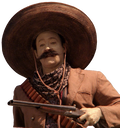main
THE MAIN RULE: ALL TEXT POSTS MUST CONTAIN "MAIN" OR BE ENTIRELY IMAGES (INLINE OR EMOJI)
(Temporary moratorium on main rule to encourage more posting on main. We reserve the right to arbitrarily enforce it whenever we wish and the right to strike this line and enforce mainposting with zero notification to the users because its funny)
A hexbear.net commainity. Main sure to subscribe to other communities as well. Your feed will become the Lion's Main!
Top Image of the Month will remain the Banner for a Month
Good comrades mainly sort posts by hot and comments by new!
 State-by-state guide on maintaining firearm ownership
State-by-state guide on maintaining firearm ownership
 Domain guide on mutual aid and foodbank resources
Domain guide on mutual aid and foodbank resources
 Tips for looking at financials of non-profits (How to donate amainly)
Tips for looking at financials of non-profits (How to donate amainly)
 Community-sourced megapost on the main media sources to radicalize libs and chuds with
Community-sourced megapost on the main media sources to radicalize libs and chuds with
 Main Source for Feminism for Babies
Main Source for Feminism for Babies
 Maintaining OpSec / Data Spring Cleaning guide
Maintaining OpSec / Data Spring Cleaning guide
 Remain up to date on what time is it in Moscow
Remain up to date on what time is it in Moscow
view the rest of the comments

There was a natural famine happening at the time and people were starting to starve in central Asia, particularly in Ukraine and Kazakhstan.
Part of the problem was that for generations, a new class of peasants had begun to form who were able to buy and own land, gradually displacing the former feudal system where most of the land was used by peasants for distant landowners who weren't really interested in the region.
This new landlord class (kulaks) basically perpetuated the same feudal system, with other peasants continuing to work for them on the land they acquired. Naturally this exacerbated wealth inequality in the region and gave the landlord class relative privilege and control over the peasant workers.
When the famine hit and people started to starve, the landlord class was relatively insulated from the problem, even being able to hoard food and resources. As the workers became more desperate, they were willing to work for less food, which allowed the landlords to hoard more, which made the workers position more desperate, causing them to be willing to work for less, and so forth in a snowball effect.
All of this was pretty normal for the region. It was a problem, with the relatively wealthy hoarding wealth and the workers becoming increasingly desperate to work for them in the middle of a natural disaster, but it was a problem central Asia had been dealing with for hundreds of years, if not longer. The new landlordism wasn't particularly parasitic when compared to feudalism, but it was parasitic nonetheless.
When people started starving to death the government stepped in and started organizing collective farms, redistributing land and hoarded resources to the peasants so that they could work for and feed themselves in a more efficient, equitable model for everyone.
The landowning class however, like capital controlling classes throughout history, weren't satisfied to work for themselves and allow the peasants to work for themselves alongside them.
Their response was to start sabotaging the collective farms, and to begin raiding and destroying depots where food was being distributed to starving people, as well as burning fields, grain silos, and slaughtering livestock, including breeding stock and egg and dairy producing stock.
Even anti-Communist propagandists like Robert Conquest (whose propaganda was cited extensively during the Cold War before most of it was debunked and he was forced to recant his claims over and over again) claim that the landowning class destroyed about 96 million head of cattle, and possibly twice as much tonnage of grain and other foodstock, completely wrecking the food production capacity of the region in the middle of the famine and exacerbating the problem beyond anything seen before.
The death toll is vastly overblown by those who want to make it out to be a genocide perpetrated the the Soviet government against her own people. The aforementioned Robert Conquest initially claimed a completely unrealistic 20-30 million deaths, before revising his claim by several million just years after his now infamous propaganda piece was published, and again as low as 13-15 million deaths decades later when his claims were immediately and categorically disproven by the opening of the Soviet archives.
As genuine investigative research continues to debunk claim after claim made by propagandists like him, the numbers continue to dwindle and the legacy of the self-proclaimed "Cold Warriors" is continuously eroded. To this day, the Ukrainian government claims ~4 million cases of starvation in the region during that period, completely disregarding blatantly false "research" conducted from a time before evidence was even available.
Eventually before his death, Conquest was forced to admit that there was no way the Soviets could have caused the famine, although he stubbornly refused to admit that they did anything to prevent it or that the land-owning capitalist class destroying 2-4 million tons of food for every starving person and wrecking the productive capacity of the region might have been responsible, despite this being the inevitable conclusion of his lifelong body of work, ironically vindicating the Soviets through desperate attempts to portray them as villains.
Decades of propaganda and its consequences are hard to undo however, and these indisputable, verifiable facts of recorded history are never welcomed in certain circles. The western public consciousness truly is a poisoned well, and facts alone aren't enough to undo that damage.
credit to /u/spookyjohnathan (the reddit user, not sure if they are here on chapo.chat)
The Kulaks (who, yes, were monsters and did engage in sabotage in the past) didn't actually have much to do with the famine in the 30s, as they had already been pretty much completely eliminated by that point. Conquest is citing the official statements of the USSR, who blamed the agricultural shortfall on the Kulaks, but the Soviet archives show that the cause was much more complex than that.
Davies and Wheatcroft, in The Years of Hunger: Soviet Agriculture, 1931-1933, explain them. It's hard for me to summarize all of it and the relevant section is only like twenty pages, so please read "(E) CAUSES OF THE FAMINE".
The gist is that planning had overestimated grain yields based on overly optimistic predictions of improvements on previous years' yields. Grain was exported under the assumption that the leftover surplus would be sufficient, but it wasn't. Drought during the growing season and heavy rainfall during the harvesting seasons resulted in low output and high spoilage, meaning much less grain was produced than expected.
The reduction in livestock from 1928 was a product of diverting grain from feed in the countryside to urban population centers. In order to survive capitalist onslaught and develop out of Medieval poverty, the USSR needed to industrialize rapidly, which meant more food for the industrial workers. However, they took too much grain from the countryside to maintain their draught animals, which, coupled with the bad weather, resulted in much lower yields than planned.
When it became clear that a famine was occurring, the USSR did everything in its power to minimize starvation, and Stalin personally pressed for more grain to be reallocated to the countryside. However, the rapidly industrializing urban centers were prioritized, for good reason.
The people who starved were the farmers, mostly in Ukraine, but this wasn't an attempt at ethnic cleansing. Meanwhile, the party used the Kulaks as a scapegoat, even though they didn't really exist at that point. And, honestly, I think that was the right call; they couldn't have just said, "hey, the weather was bad and also we kind of fucked up and that's why you're starving to death", and expected to still have the support of the people. The authors describe this overall response as "ruthless and brutal", an example of a "genuflection to orthodoxy" as Parenti puts it; even though they're in the process of dismantling the narrative of Stalin being a brutal, malicious dictator, they still aren't willing to fully break from it.
Do you know why people starved mostly in Ukraine v other rural areas?
Inadequate use of crop rotation and particularly bad weather: